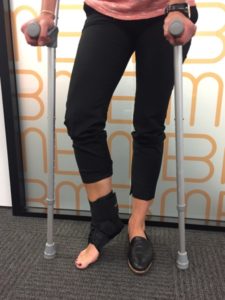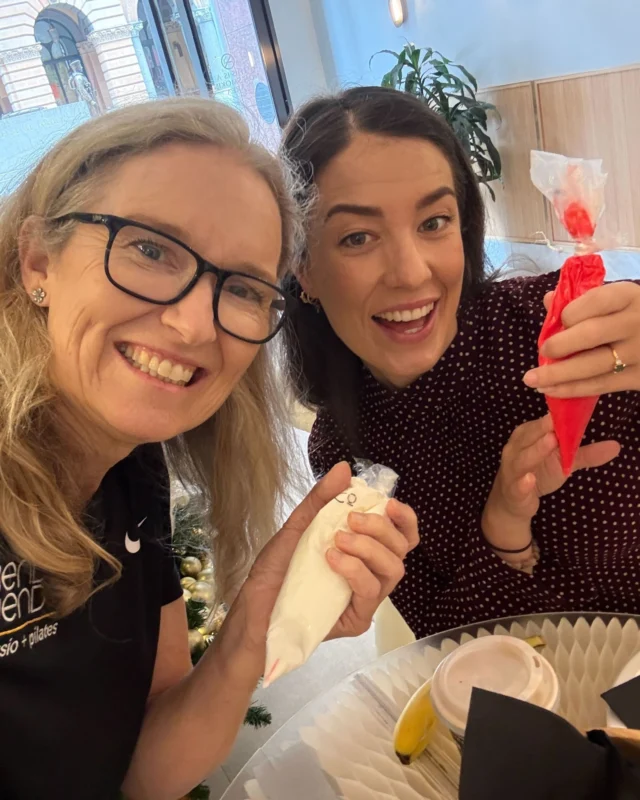 High ankle sprains involve the injury to the ligaments that are located just above your ankle joint, opposed to the more common lower ankle sprain that occurs to the ligaments on the outside of your ankle. These ligaments connect your shin bone (tibia) to the outer ankle/leg bone (fibula). The connective tissue connecting this joint together is known as your syndesmosis.
High ankle sprains involve the injury to the ligaments that are located just above your ankle joint, opposed to the more common lower ankle sprain that occurs to the ligaments on the outside of your ankle. These ligaments connect your shin bone (tibia) to the outer ankle/leg bone (fibula). The connective tissue connecting this joint together is known as your syndesmosis.
The syndesmosis is a complex that holds together the tibia and fibula (shin bones), as well as keeping the ankle joint stable. It consists of 3 parts:
- ligament at the front of the ankle (AITFL)
- ligament at the back of the ankle (PITFL)
- sheath that runs in between the two shin bones (interosseous membrane)
When either one of these structures is injured, it affects how the syndesmosis functions, and causes the ankle joint to become unstable.The syndesmosis is quite fibrous and limits the movements between the fibula and tibia, it plays an important role in transferring and withstanding large amount of force in this area when walking, running and jumping.
How do high ankle sprains occur?
While the syndesmosis can be injured during any trauma to the ankle joint, typically it is most common when a force is applied while the foot is turned outward (external rotation) and upward (dorsiflexion). In this position the ankle complex is most separated, leaving the syndesmosis at it’s most vulnerable.
Symptoms of a high ankle sprain can include:
– pain felt above the level of the ankle joint that increases with outward rotation of the foot
– pain with walking
– bruising and swelling above the ankle joint, however it can be seen further down the ankle as well
– bony tenderness may be present if a fracture has also occurred
How do you diagnose high ankle sprains?
At Bend + Mend one of our Physiotherapists will assess the ligaments around the ankle with functional and special tests. Depending on the patient’s history of the injury and clinical test findings, you may be referred for an Xray or MRI to confirm the diagnosis and determine the extent of the damage. A weight-bearing x-ray is commonly used as it will display the amount of gapping between the lower end of the fibula and tibia which can indicate that amount of ligament damage.
What’s the treatment for high ankle sprains?
As mentioned earlier, the syndesmosis is quite a stable joint. Depending on the amount of damage done to this connective tissue that holds the bones together, the amount of movement at the joint will vary. As you can imagine every time you step as you walk you place quite a large amount of pressure through your leg. If the the ankle joint has decreased stability, you’ll experience pain with each step. Therefore, in the early stages of a high ankle sprain crutches can be used to help take the pressure of the injured ankle or a camboot/ankle guard may be used to also support the joint and relieve pressure placed through it. As well as this, in the early stages swelling control is essential using ice, compression and elevation.
After the initial rest period, pain-free ankle range of motion exercises and strengthening exercises will be commenced. These will be progressed to more sport specific or functional exercises to help you return to the sport of choice. These injuries can take up to 6 weeks or more before returning to sport. There are some good taping techniques to give the ankle extra support on return to running if required. Surgery is only required in severe cases where there has been a complete rupture of the syndesmosis or an associated fracture is present that won’t heal without intervention. Like with any soft tissue injury there can be residual scar tissue which can lead to an ankle that is a little bit more stiff, so treatment will also involve techniques to help reduce this stiffness. Manual therapy is important to ensure the joints and muscles around the ankle remain mobile and flexible to reduce pressure off the syndesmosis.
If you do suffer an ankle injury, be sure to book an appointment with one of our Physiotherapists at Bend + Mend in Sydney’s CBD to ensure the correct management and rehabilitation program is implemented.





